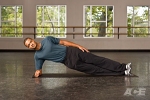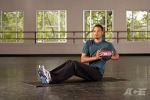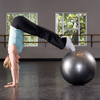
Because it’s January, and the time of year for healthy, goal oriented and guilt-ridden posts about lofty resolutions for the new year, here’s another blog post to guilt your conscious for the next few days. Or maybe you need an article to debate with your social media peers about why you don’t make resolutions. Whatever your reason for reading, thanks for visiting.
Meanwhile, I like to consider this my sequel to my last post about “6 Great Reasons to Join a Gym.” I want to write this because I feel that most people don’t see the value of a health coach/trainer, or even know what either really do, and that can be for a variety of reasons. For one, it may be a concept associated with celebrities, reality TV shows, or the wealthy. Seeing contestants on the Biggest Loser can look pretty intense, and not exactly an invitation to seek a trainer to the average sedentary onlooker.
Another thought is losing weight, eating healthy and exercise seem like simple concepts; you don’t really need someone to tell you what to do, just stop eating bad food and start exercising. Not necessarily a bad place to start, but that mindset underestimates the power of poor habits, community, medical history and negative psychology someone may be facing against failed attempts at lifestyle changes.
So allow me to highlight what I see as six benefits to hiring a Personal Trainer or Health Coach, which may also simultaneously introduce you to the details that these life changing work these professions offer.
(For clarification, a Personal Trainer (PT) is a certified exercise specialist that helps clients specifically in the area of exercise. A PT may possess other specialties as well (therapist, chiropractor, etc.) but as a trainer, the PT specialty highlights his/her knowledge specifically to exercise. A Health Coach (HC) is a certified specialist in the expertise of lifestyle change. A HC may also have other qualifications such as dietitian, psychologist, personal trainer, etc., but the main objective is providing strategies to help a client overcome barriers to healthy living through one-on-one therapy-like coaching sessions.)
1-EXERCISE
As a throwback to my previous post on why gym membership would hopefully inspire otherwise well-intentioned folks to start exercising, I also see members that throw away hundreds (thousands?) of dollars each year with gym memberships that don’t get used. It’s unfortunate, but it’s also a testament that simply signing up for something does not necessarily change any habits. Without an actual plan, particularly one that involves accountability (more on that later), most well-meaning gym sign-ups in January do not evolve into anything substantial past March.

The beauty of using a PT/HC is that similar you make an appointment, you commit to seeing someone who will instruct, encourage and challenge you to reach your fitness goals. It will help you start moving past the sense of failure you feel when your exercise plan derails, and help you move towards feelings of success with each session completed. Better yet, with each exercise, and each session, you make strides towards being healthier. Even one exercise session increases your endorphins and sense of well-being, which improves your overall outlook on life, creates a positive feedback loop, and makes it more probable that you will continue the cycle of exercising. Positive feedback loops are the key to starting a new habit, so meeting with a coach can begin the cycle to healthy, lasting change.
2-BE HEALTHIER
Connected with the positive feedback loop is the obvious benefit of exercise, which is improving your overall health. It’s common sense that exercise has benefits, but I often like to think of it as the “Magic Pill” that many people are looking for in their journey towards wellness. Of course, exercise can be overdone and done incorrectly, which is another issue altogether, but when you meet with a trainer, consider that you are making improvements in all of these areas with each completed session: heart health, cholesterol, blood pressure, sleep quality, bone strength, anti-aging, balance/fall risk, joint mobility and more!

In a country where we spend at least $147 billion on obesity-related healthcare ($132 per obese individual per year), I think it’s critical that we look at the real solutions to medical problems that can be addressed through exercise and guided by trainers.
3-ACCOUNTABILITY 
I alluded to it in reason #1, and it’s important to highlight this point in a section by itself. This may very well be the MOST IMPORTANT reason to hire a trainer. And I think you can already guess the reason why. The reality is, we don’t handle change very well on our own. We have epiphanies and journals, blogs to follow, Instagram influencers, Pinterest pins of #healthyrecipes, and everything else that we think will help us get over the hump of our bad habits. But for most people, those things won’t work. The question is why?
I had to personally mull over this question last year. It came after an unexplempary act of eating an old, frost-bitten ice cream cone accidentally found in our freezer. It was not at all savory, and I stood there asking myself why I ate it in the first place. (In my defense, I did actually throw out the cone after the unsatisfactory halfway experience.) So for the next few days, I had to ponder why, knowing all I know about habits, food and exercise, did I eat that cone that I had not at all planned to eat, which did not satisfy anything I wanted?
It wasn’t for lack of knowledge…I have Google to answer every possible question I can think of about health, and an app for every exercise to see. It’s not for lack of consequences…the guilt, bloating, extra pounds, stale food and other side effects don’t stop people from eating unnecessary snacks. It’s not even due to socioeconomic status; people from every class struggle with food fixations and addictions (and I would wager that the wealthy may suffer from food vices as much or more so than the poor).
So I had to conclude that the main reason we fail at our attempts is that we ultimately have no one to answer to, and/or a community to belong to which encourages our desire for change. In an age of remote access to answers, we tend to devalue the power of relationships. Explaining to a real person, a friend, a confidante, why you ate the pint of ice cream and skipped your planned workout is not an exercise in shaming. It’s building rapport with someone you hope will help you stop the negative behaviors. You learn that this coach is not going to ridicule you for failing, but sympathize with your struggle, and strategize with you to develop better options. A coach might send you encouraging texts throughout the week, links to articles that might relate to your situation, or the perfect meme to capture the pain of leg day workouts.
I felt this reality for myself in regard to professional counselling. I don’t hide the fact that in 2018 I sought out the help of a local Christian counselor in regards to my marriage. She helped me identify poor communication habits on my part, and for a year we worked through improving my dialogue with my husband and family. In April 2019, I “graduated” and went back to life without a therapist. It didn’t take long for the ugly habits to rear back up (1 newborn + 2 toddlers (- sleep) = risk of mental problems. And although I decided not to return to counselling, I was able to identify the old habits that I was rekindling, and see that those tactics weren’t working, because they never have, and they never will.
The same idea is true of using a PT or HC. It doesn’t have to be a lifelong commitment to create lifelong change. When you start with an open mind to receiving professional advice to your problems, even just short-term commitments can keep you from defaulting back to old habits.
4- REACH YOUR FITNESS GOALS
In my experience, it usually takes a tipping point for someone to finally cave and hire a trainer. Whether it’s chronic joint pain, fear of falling (and injury), or desperation to find “something that works,” clients are looking for someone to help them reach a specific goal. Quite often it’s weight loss, and by the time a client reaches a professional, they’ve tried a variety of diets, exercise programs and read a lot of ideas about what “should” work.
With this in mind, it’s important to for the client to accept that they DON’T have the answers. I say important, but it’s actually critical to an individual’s success. There are certainly bits and pieces of knowledge to glean from other areas of wellness, but to reach your goals, the sooner you trust your coach, the sooner you will make progress. (*Note: I’m in no way suggesting that you don’t question your coach, but do it with a spirit of a student, eager for solutions that work.)
What sets a coach apart from other advice you might find, is that we have access to recent studies and research, and we have the experience of working with many individuals with similar goals, so we learn from observation and experience what may work best for clients. We are trained to meet the emotional and physical needs of overweight and de-conditioned clients (as well as a host of other special medical needs), and we are trained to know when to refer out to other medical professionals to better assist the client (dietitian, psychiatrist, physical therapist, etc.).
Also, we (hopefully) aren’t tied down by specific health products, so we can offer our unbiased opinion on the products on the market without seeking your for your subscription.
Finally, certified fitness professionals complete continuing education courses (CECs), just like other professions. We spend hours learning about exercise, nutrition, diets, medical conditions and more to help meet the needs of our clients.
5-CONTINUE REHAB

It’s not new information that the Baby Boomers in the USA (those born in the years shortly following WWII) are the fastest growing segment of our population. By 2029, the expected growth of Boomers will shoot to 20% of the population. With that in mind, fitness professionals know that they stand in the gap between doctors/therapists and patients treating the aging body. Although still relatively slow to engage the fitness industry, therapists especially are gradually valuing the importance of fitness professionals who can help their patients continue therapy after treatment. This is particularly true for those whose health insurance limits them to a certain amount of therapy visits in a calendar year. Working with a trainer continues the exercise program and also allows for progression within a client’s tolerance.
I can say from personal experience, I have had many clients move back and forth from me to physical therapy, sometimes at my recommendation, other times from the therapist. It is encouraging to see the specialties overlap and provide recovery and healing to the injured client. I have also had several clients use training services for the specific purpose of improving their balance. When training is used for this purpose, it bypasses the need to see a doctor first (in most cases), then the therapist, and work through insurance to get quality care. Instead, a client signs up for training and within the week, he/she can start working on the skills needed for improved balance.
6-STOP WASTING MONEY

OLYMPUS DIGITAL CAMERA
Slightly referenced in point one on using trainers instead of relying solely on gym memberships, my point here is to encourage anyone out there who’s searching the web and about to “Click and buy” a Seen-on-TV, popular weight-loss program or about to start following the latest Instagram diet…save your money and invest in what works. Products, apps, diets and exercise equipment can be accessories…helpful tools on your journey. But if you haven’t addressed the real issues of why you gained weight in the first place, or come up with a specific plan to reach your goals, then save your money for investing in yourself. Use the money to invest in what research shows will work. Health coaching and behavior change approaches continue to be at the forefront of successful healthy lifestyles.
In fact, a 2019 study from Stanford and NY University continues to send ripples through the medical and cardiac community by revealing that lifestyle changes versus stent placement & bypass surgery showed no statistical difference in outcome for those with low-level heart disease. A testament once again that with effective coaching, reducing medical risks and improving health is not found in a product, it’s found within the client who’s willing to take small steps with a coach for lasting change.
What’s your experience? Have you used a health coach or trainer? Comment below to share your thoughts. Thanks for reading. If you benefited from this blog’s content, consider subscribing to catch future content.









